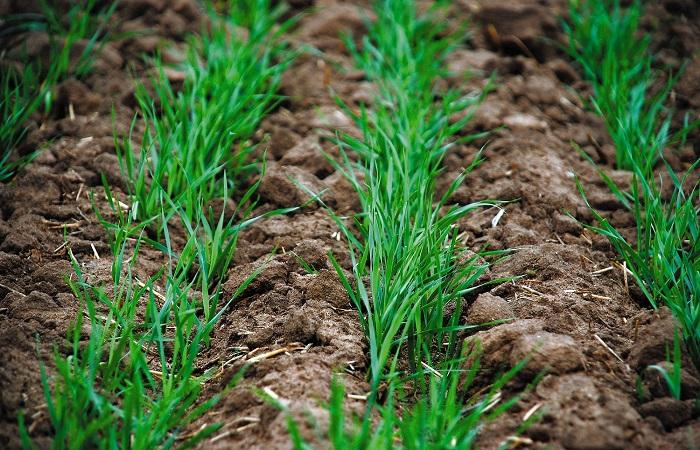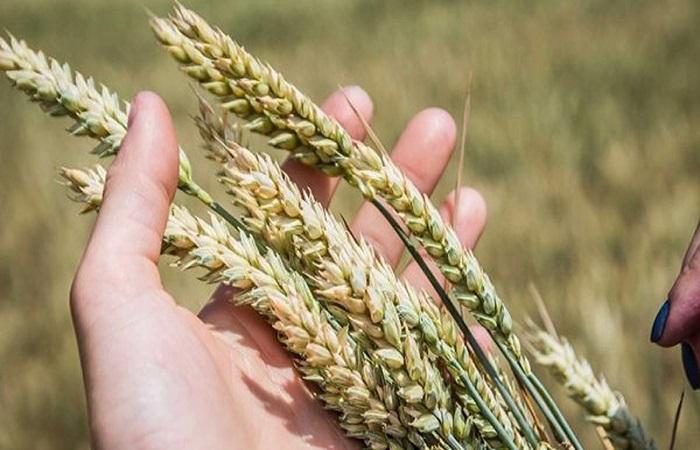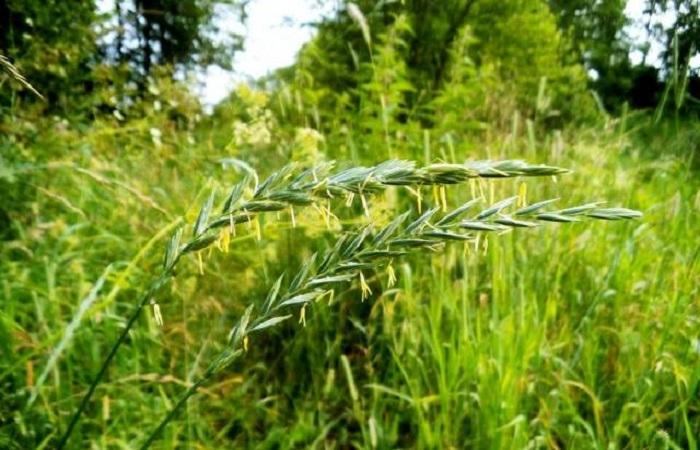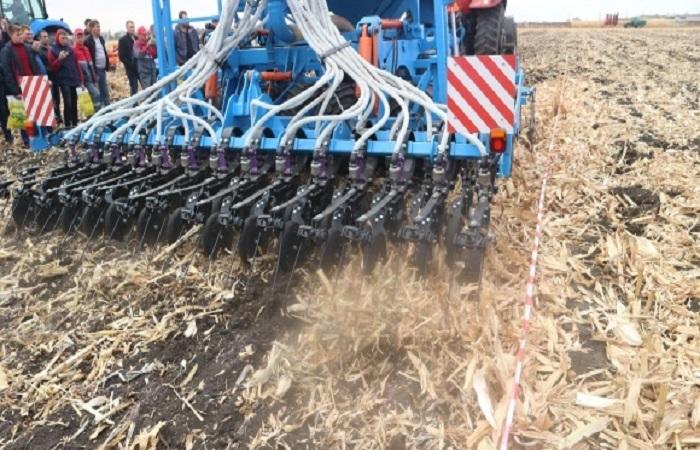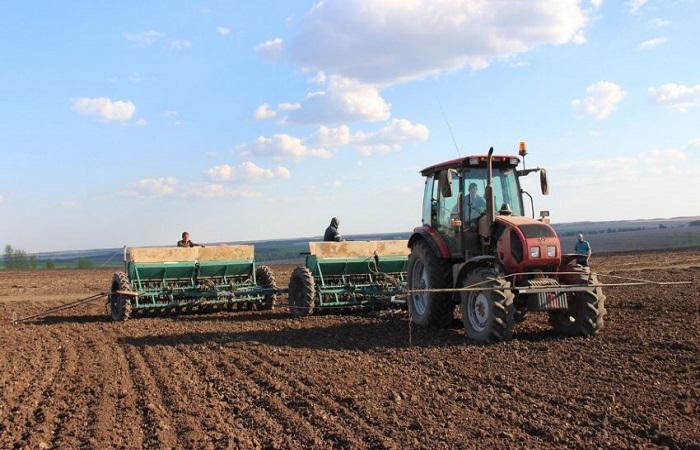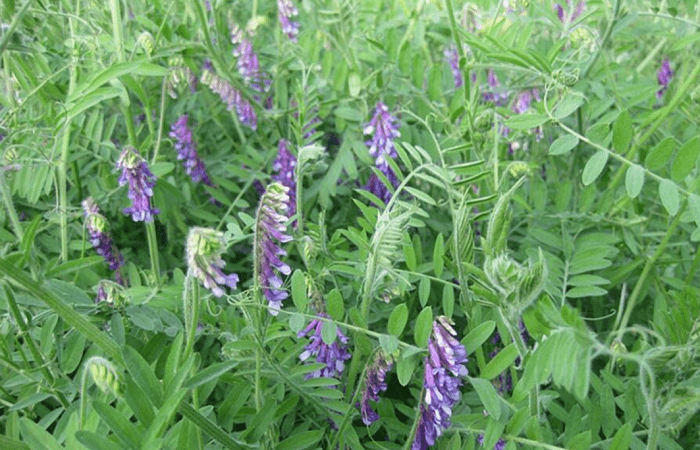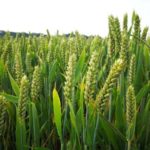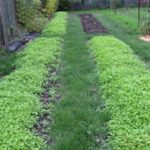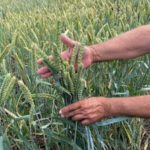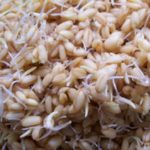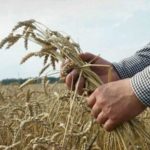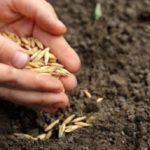To improve soil fertility, sowing green manure crops has been practiced for a long time. This is a good reason to naturally improve the soil without adding fertilizers. When using green manure, the soil is enriched with the main components: nitrogen, potassium and phosphorus, as well as humus, which is formed during the decomposition of the plant. Wheat can be used as green manure along with other grains and herbaceous crops.
Is wheat a green manure?
Of course, wheat can be used for soil greening, since it has all the qualities necessary for this:
- Unpretentiousness to soils and the environment.
- Fast and abundant shoots.
- A large amount of green mass.
- Short ripening period for green manure.
The only obstacle to sowing a crop as green manure may be the cost of seed material. That is why, for the purpose of green manure, cheap varieties are used, which are excellent for improving the soil.
Which is better: winter or spring wheat?
It cannot be stated unequivocally that winter wheat is better than spring wheat or vice versa. Each type has its own advantages and “niche” of use:
- The winter variety is best suited for southern regions with warm winters and early spring. Shoots appear early, greenery grows quickly and rapidly, thanks to which the soil for the next crops can be used much earlier.
- Spring varieties are suitable for colder regions where winters are harsh and crops can be seriously damaged during winter sowing. Such varieties are more sensitive to frost, drought, pests and diseases. Also, spring varieties are sown in order to increase the fertility of already cultivated, that is, previously cultivated lands.
Varieties of wheat as green manure are selected individually, based on the purposes for which the sowing is carried out.
Advantages and disadvantages
When sowing wheat as green manure, you can get the following advantages:
- Rapid growth of green mass, which can be used in various ways, including as fresh succulent food for pets.
- Preparing the soil for growing other crops.
- Improvement of the land, improvement of its structure, nutritional value, moisture permeability.
- Extermination of the bulk of weeds. When a plot is densely sowed, wheat seedlings suppress the growth of annual weeds and inhibit perennial weeds.
Even wheat roots remaining in the soil bring undoubted benefits. They loosen dense soils, saturate them with nutrients, and then enrich them as they decompose.
One of the disadvantages of growing wheat as green manure is that after cereals it is impossible to sow similar crops, that is, other cereals.
Technology and sowing timing
Before sowing any green manure, it is necessary to clear the soil of weeds. If the green mass is not planned to be used as food for domestic or farm animals, the area can be treated with herbicides. Otherwise, this cannot be done, because toxic components can pass into the greens and harm the health of the animals, and may even cause death.
The depth of grain placement is also of great importance depending on the type of soil. The lighter the soil, the deeper the wheat is sown. To obtain a good harvest of green manure, subsequent care is also important - weeding, watering, treatment against diseases and pests. With good preparation, care for green manure wheat is minimal.
Winter
This type of wheat as green manure is sown before winter, since for active germination and rapid development, the grain must be frozen, that is, exposed to sub-zero temperatures.
By the time frost sets in, the seedlings develop roots, so they can easily withstand the cold. The condition for the development of wheat is snow cover. Under such a “blanket” the vegetation safely overwinters, and in the spring it gets a start thanks to the moisture from the melted snow.
Spring
Spring wheat can be sown for green manure not only in spring, but throughout the entire summer, until the beginning of autumn. An important condition is that the soil warms up to +2-3 degrees Celsius and the time until autumn frosts is at least 40-45 days.
Sow seeds in cleaned and dug soil at a rate of 30-50 grams per square meter. A couple of days after sowing, the surface should be rolled. This will compact the loosened top layer and speed up seed germination, making seedlings more frequent and uniform.
The seedlings are cut before the ear formation phase begins. The stems are not buried, leaving them on the surface. If the weather is dry, water it after a couple of days and then cover the greens with a half-meter layer of compost. You can also speed up the decomposition and enrichment of soil using EM products.
What can you combine with?
Modern agriculture more often uses mixtures of plants for green manure than “pure” crops. For these purposes, mixtures are created from cereals, cruciferous or legumes. Most often, two-component variations are used, for example, from wheat and leaf mustard.
In the Netherlands, three- and four-component formulations are considered the most popular. They provide more benefits because different plants work in different directions, leading to better results. This method helps to avoid frequent use of mineral fertilizers, cleanses the soil of toxic secretions of some plants, and helps to destroy weeds, infections and pests.
For example, in a wheat-mustard pair, the second component allows you to restore the supply of nitrogen in the soil, which the cereal crop absorbs, and also effectively disinfects the soil.Mustard is so beneficial for soils that it can be used as a natural insecticide - insect pests simply leave areas sown with it.
What to plant next?
After green manuring with wheat, the following crops can be planted:
- Onion.
- Root vegetables - carrots, beets.
- Strawberry wild-strawberry.
- Berries: raspberries, blackberries, blueberries, gooseberries.
It is undesirable to sow the same crops after cereal green manure, that is, wheat, rye, oats, barley, and so on.

